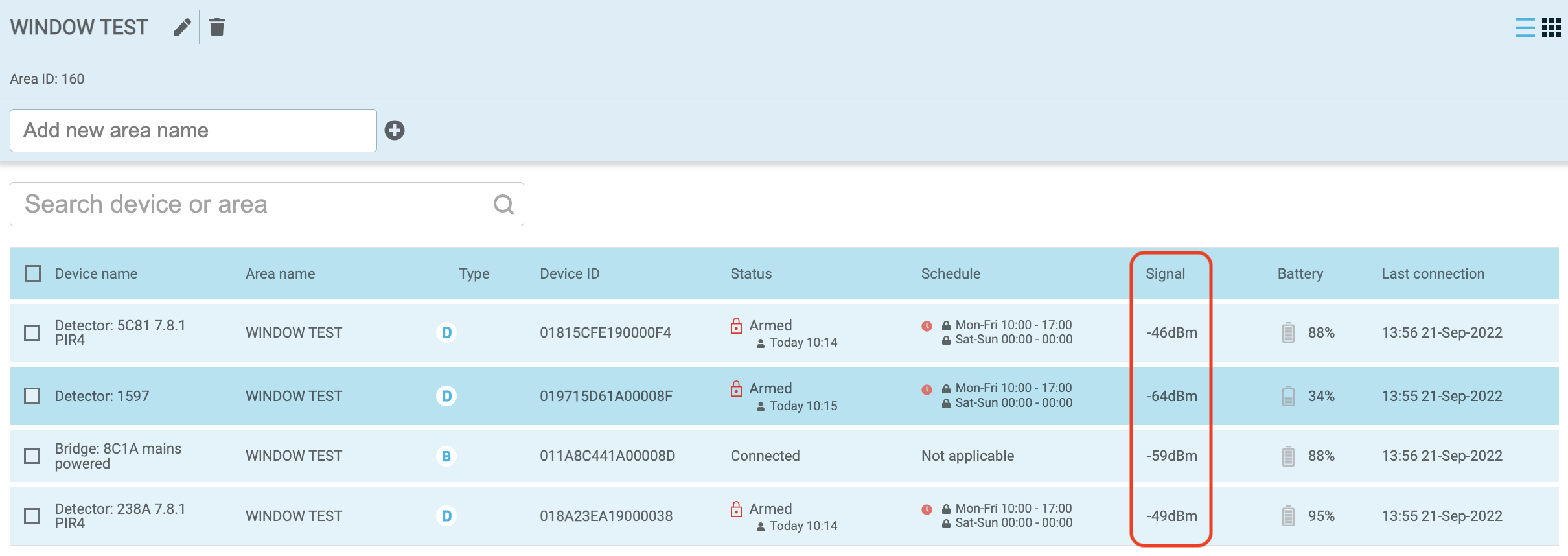- 02 Dec 2022
- 2 Minutes to read
- Print
- DarkLight
- PDF
How to optimize battery depletion?
- Updated on 02 Dec 2022
- 2 Minutes to read
- Print
- DarkLight
- PDF
 Reconeyez users very often ask how many alarms can be sent with one charging cycle by detector or bridge. Although the average number of alarms forwarded by bridge with one charge is around 10 000 alarm events (ca 50 000 if you count each alarm message, thumbnail, fullphoto and status message separately), then there are several factors affecting battery depletion.
Reconeyez users very often ask how many alarms can be sent with one charging cycle by detector or bridge. Although the average number of alarms forwarded by bridge with one charge is around 10 000 alarm events (ca 50 000 if you count each alarm message, thumbnail, fullphoto and status message separately), then there are several factors affecting battery depletion.
1. On average one bridge battery charge cycle allows to upload 1-1,5 gigabytes of data. So the first major factor affecting the number of alarms uploaded during one depletion cycle is the size of the thumbnail and fullphoto. By default thumbnail and fullphoto size is set to Large, which is advised to be lowered to Small or Medium to better optimize battery depletion. This also outlines the fact that the number of alarms per charge cycle depends on various factors and may not always be the same.
2. Another factor affecting battery depletion is the 2.4 GHz signal quality for detectors and bridges and mobile signal quality for bridges. Both the RSSI (received signal strength indicator) and BER (bit error rate) affects battery depletion per one alarm. To achieve minimum battery depletion due to bad signal, please always install devices with direct line of sight to the bridge and as close as possible. Avoid installing detectors in patterns where they use multihop to relay alarms to the bridge. It is possible to measure both mobile (bridge Mobile RSSI and Mobile BER )and 2.4 GHz signal (detector Trace) using the Reconeyez app during system installation. Installing the system without measuring signal quality of each unit can result in premature battery depletion due to packet loss and bad signal. Reconeyez cloud displays the signal in Devices menu.
.png)
3. Another factor affecting battery depletion is the number of alarm events (how often devices trigger alarms). This can be configured using many different configurable parameters. Motion and tamper sensitivity will keep the number of false alarms under control. Generally it is advised not to change motion sensor Adaptive motion sensitivity regime manually as the automatic algorithm will adapt detector motion sensitivity more optimally. Only change Motion sensitivity manually when you have tested how the values affect detector motion sensor capacity. Tamper sensitivity can be reduced from default values in case devices endure strong wind or heavy machinery used at the site.
It is also possible to configure Motion/Tamper sensor pause - this parameter allows to configure a pause in seconds after each trigger - it is advised to be used in areas with busy movement (eg. a busy street) to limit the maximum number of triggers per minute per device. Quantity is not quality and more alarm photos does not necessarily equal more useful information. Also, Schedule and Disarm functions can be used to reduce number of motion alarms - if there are authorized people working on a site, then it makes no sense to have the Reconeyez system trigger non-stop, but to switch the motion sensor off.
4. Camera settings allow to configure Multiple photos per one motion or tamper trigger. To better optimize battery depletion, this parameter should always be configured to default 1. Generally the intruder will trigger multiple alarm events anyway and will stay in the detector detection area for prolonged time. In case installer chooses to change this value, the suggested number of photos per trigger is up to 3. A very long Photo interval between the multiple photos can also drain device battery more.

